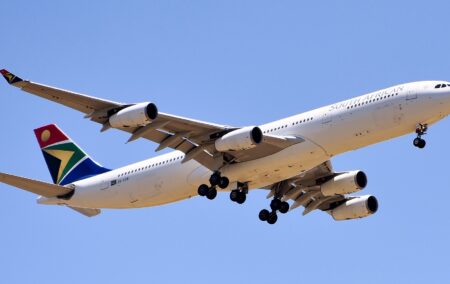The Department of Public Enterprises has said in a statement on its role in the business rescue of South African Airways (SAA) that it was ‘determined to break with the past patterns of bailouts as these have become a moral hazard’.
Placing the national carrier in business rescue is ‘an optimal mechanism to restore confidence in SAA and to safeguard its good assets’.
The government would work with the business rescue ‘practitioners’ in achieving ‘the primary goal of bringing out of this process a restructured, modern airline that is able to bring million more tourists and be a beacon of both business innovation and efficiency’.
SAA lenders had ‘provided R2 billion as post-commencement finance to enable SAA to continue to operate, while the government, through the National Treasury, committed an equal amount’, the statement said.
‘We would like the airline to create more jobs in tourism and related sectors of the economy and work with other African airlines to underpin and service the integration of African markets and improve dramatically intra-African trade and travel.
‘We are determined to break with the past patterns of bailouts as these have become a moral hazard. The business rescue process is unprecedented at this level and [in this] fashion, and in the public sector. It is a decisive move that demonstrates that government will undertake the necessary bold steps in order to reposition its assets in such a way that they do not continue to depend on the fiscus and thereby burden taxpayers,’ the statement said.
The government committed to the business rescue process ‘so that we could minimise job losses and give birth to a rejuvenated SAA that all South Africans could be proud of’.
Creating ‘a sustainable, competitive and efficient airline with a strategic equity partner remains the objective of government through this exercise’.
[Picture: Bahnfrend, https://commons.wikimedia.org/w/index.php?curid=75488768]

